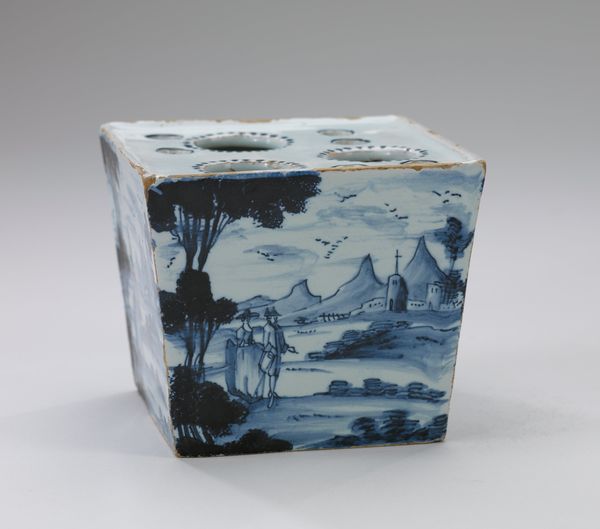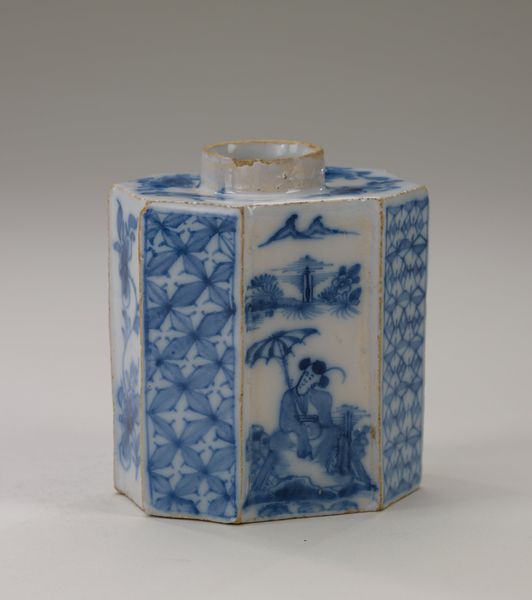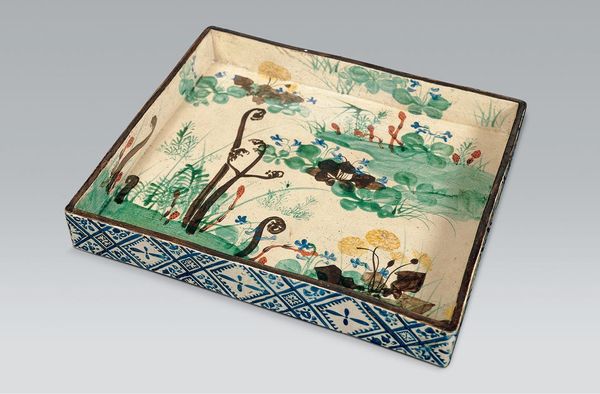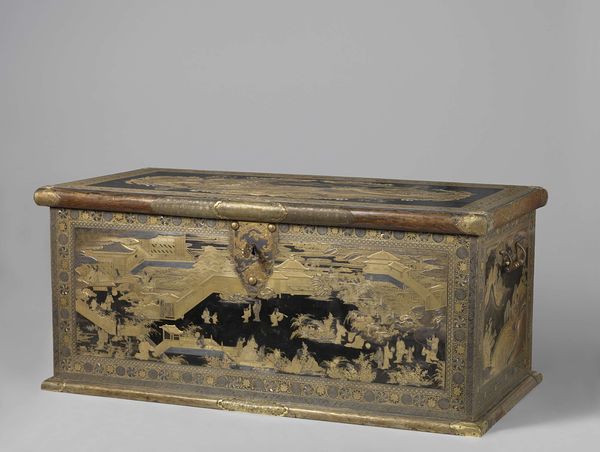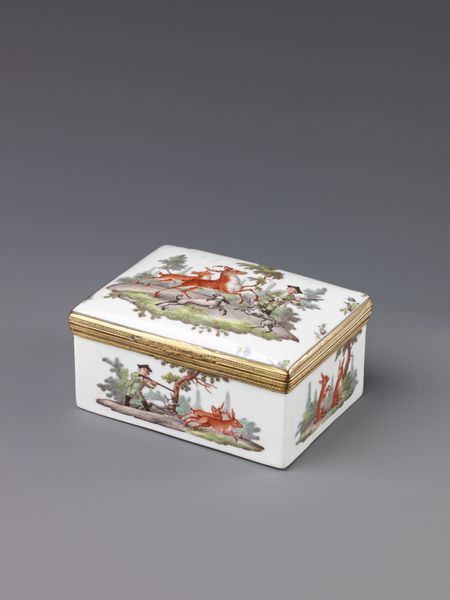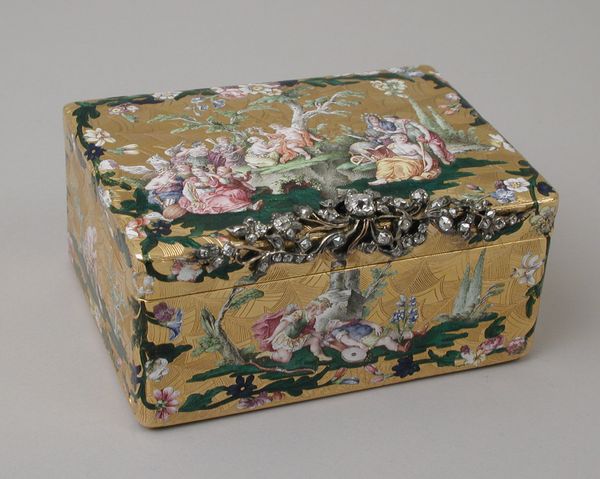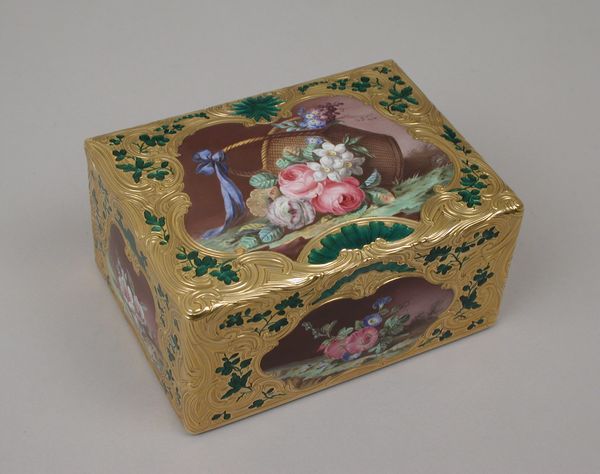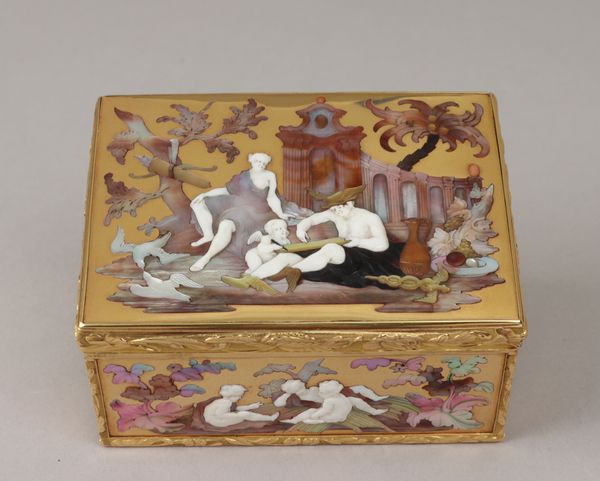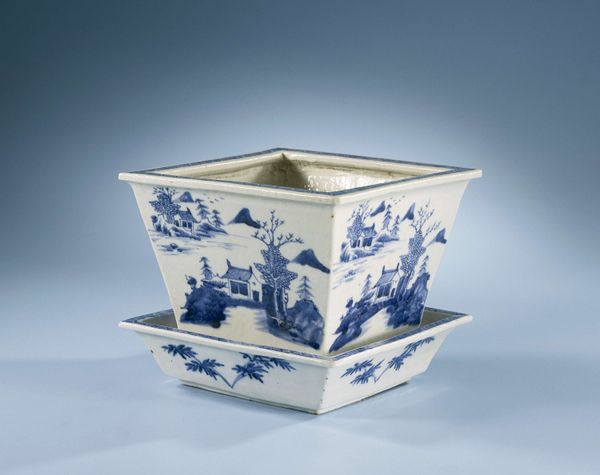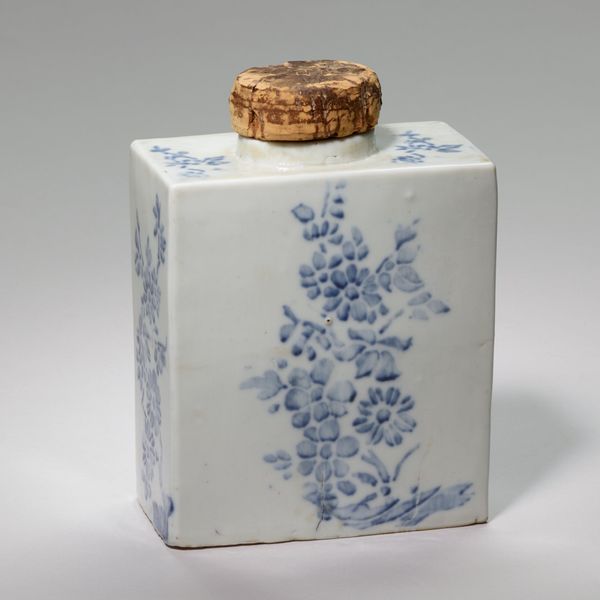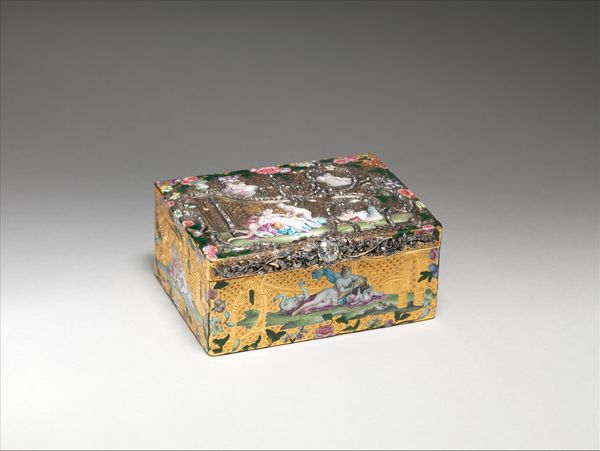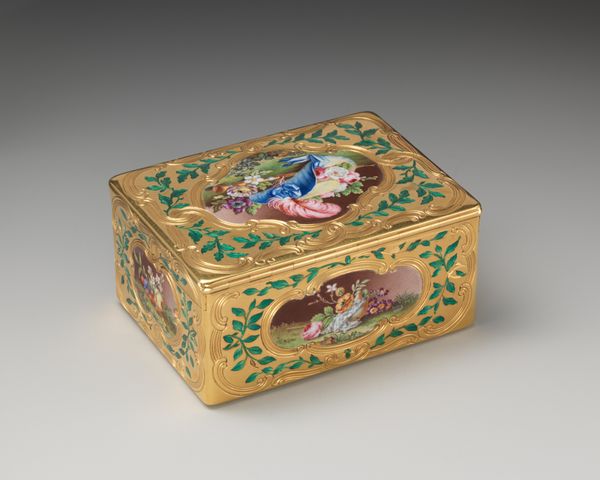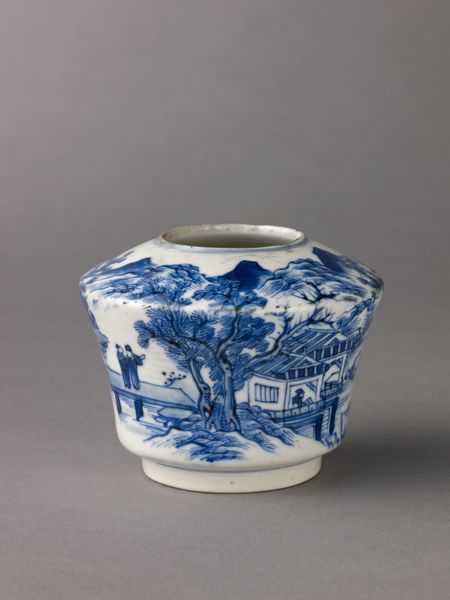
drawing, ceramic
#
drawing
#
landscape
#
ceramic
#
figuration
#
orientalism
#
ceramic
Dimensions: 3 5/8 x 2 1/2 x 6 in. (9.21 x 6.35 x 15.24 cm)
Copyright: Public Domain
Editor: This is a ceramic flower holder, dating back to around 1760. It's decorated with a blue and white landscape, showing figures in what appears to be an Eastern style. I find it fascinating how this object combines a domestic function with quite intricate, narrative scenes. What stands out to you? Curator: What interests me most about this piece is how it participates in the visual language of Orientalism prevalent during the 18th century. Flower holders, objects of relative luxury, became stages upon which Europeans projected their fantasies and understandings of the East. Notice how the 'Chinese' figures are depicted alongside stylized landscape elements. Editor: So it’s less about accurate representation and more about fulfilling a European idea? Curator: Precisely. The aesthetic choices—the blue and white palette, the depiction of figures—fed a specific appetite for the exotic, a consumable version of “the Orient,” and an indication of worldly sophistication for the owner. Do you think this tells us anything about the museum display for artwork such as this? Editor: That's a good point! Highlighting pieces like this forces the museum, an important Western institution, to address some sensitive, important, art historical context for visitors to better appreciate them, not merely adore them for the surface aesthetics! Thanks for shedding a new light on this for me! Curator: Absolutely! By acknowledging the power dynamics inherent in representation, we can engage in a much more honest and informed relationship with objects like this flower holder, and promote public interest in critically studying them.
Comments
No comments
Be the first to comment and join the conversation on the ultimate creative platform.
